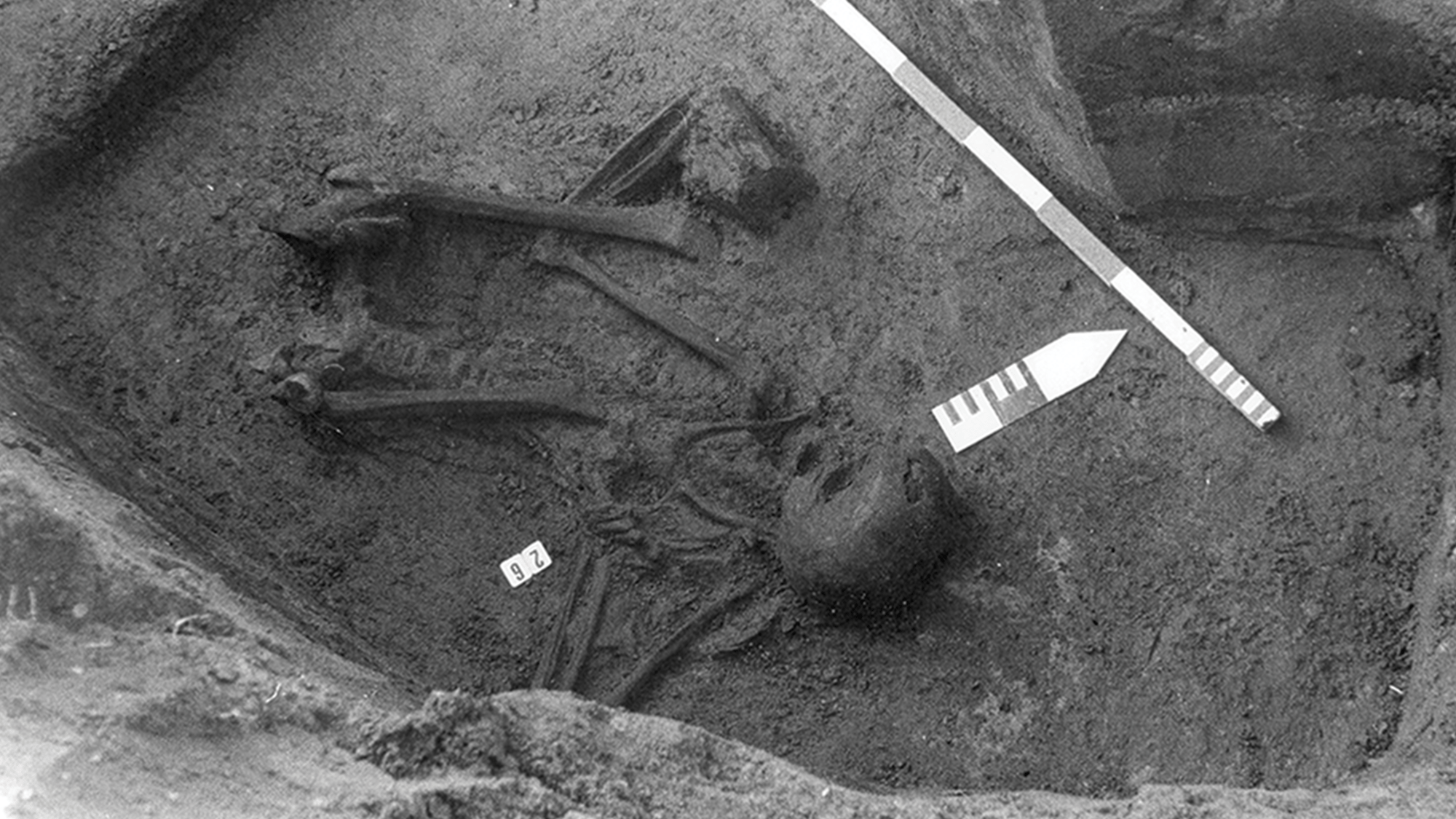What’s the weirdest thing you learned this week? Well, whatever it is, we promise you’ll have an even weirder answer if you listen to PopSci’s hit podcast.
The Weirdest Thing I Learned This Week hits Apple, Spotify, YouTube, and everywhere else you listen to podcasts every-other Wednesday morning. It’s your new favorite source for the strangest science-adjacent facts, figures, and Wikipedia spirals the editors of Popular Science can muster. If you like the stories in this post, we guarantee you’ll love the show.
FACT: What scientists thought was one skeleton turned out to be an ancient jigsaw puzzle made of random bones
By Rachel Feltman
This story starts back in the 1970s in part of Belgium. Researchers were tooling around this second century Roman cemetery and found a body. Not too surprising for a cemetery, right? It had a pin made of bone that was pretty typical for that time period and for the Roman Empire. Again, not so surprising. Scientists were like, “easy peasy, this body we found in a Roman cemetery from the second century is the body of someone who lived and died in the Roman Empire during the second century.” It went into a museum labeled as such. But that’s not the end of the story.
Recently, researchers started to suspect something was up. For starters, the body had been found lying on its right side with its legs tucked up—which was odd, because most bodies in that time and place were interred laying flat on their backs. They also noticed that the bones didn’t really match, with some looking like they came from much younger folks than others. A group of researchers decided to analyze the bones to find out more.
As New Scientist recently reported, their findings were pretty shocking: this skeleton was actually made from eight different people, arranged meticulously to mimic a single corpse.
Things get even weirder: while most of the bones are from around 4212 to 4445 years ago, the head of the skeleton seems most likely to belong to a Gallo-Roman woman who lived more like 1800 years ago. We’ll probably never know why someone assembled these bones in the first place, let alone how they wound up with a chronologically mismatched head.
As the researchers note in their paper, this isn’t the only known instance of ancient folks doing skeletal jigsaw puzzles. But for now—and, let’s be honest, probably forever—the meaning behind this strange practice will remain a mystery.
FACT: Whenever you slap your hand against something, there’s a non-zero chance your hand will pass through it
By Cheebs
Quantum physics is wild. So wild that it’s technically possible for your hand to pass through a solid wall—though it’s super unlikely.
At the tiny, atomic scale, things don’t behave the way we expect. Normally, objects are solid because the atoms and particles that make them up are tightly packed, and the electrons around them create a sort of “force field” that stops things from passing through. But in quantum physics, particles like electrons don’t have a fixed position. Instead, they exist in a kind of “cloud” of probabilities—meaning, there’s always a tiny chance that they might suddenly “pop” through something solid, like a wall.
This is called quantum tunneling. Imagine trying to push a ball through a wall, and instead of bouncing back, it just randomly appears on the other side. In theory, something like this could happen with your hand if it were tiny enough—like, the size of a single atom. The problem is, your hand has billions of atoms that would all have to experience this at once, so the chances of this actually happening are basically zero.
So, while it’s technically possible, it’s not something you’re going to see happen in the real world. But that hasn’t stopped people on TikTok from trying!
FACT: Smells used to be an integral part of magic—and they’re honestly pretty magical
By Jess Boddy
Ever wondered what a witch smelled like back in the day? Some folks say they smelled really good, and others say they smell really, really bad. Regardless, witches from the Odyssey to Salem used scent to their advantage. A drizzle of some fragrant concoction could allegedly make their victims fall asleep, do their bidding, or even become fully and wholly infatuated.
Now, you might be thinking—this is a science podcast. What’s with all the magic? But think about it: you can’t see or touch smells, but they can affect you emotionally and even physically. And really, that’s not dissimilar to how people think of magic in cultures around the world—this kind of amorphous thing that can change the way someone acts or feels.
Give this week’s episode a listen to hear all about how “magical” scents can hijack our brains—and maybe even learn how to cast a spell of your own.

